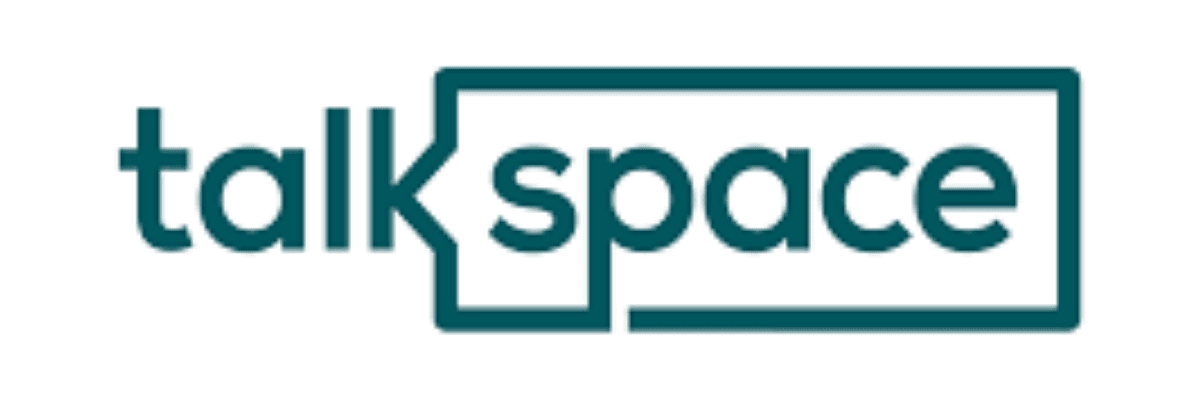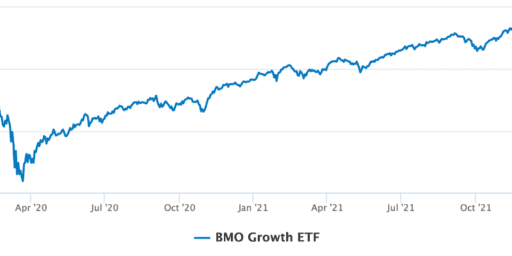A Frugal Guide to Healthy Living in Canada
If you’re not paying attention, healthy living in Canada can really cost you.
Out-of-pocket healthcare payments make up about 15% of total health spending in Canada, and those numbers have only increased. Combine rising healthcare costs with skyrocketing grocery prices, and it’s more important than ever to find effective ways to trim your spending – without sacrificing your health!
In this article, you’ll find information on everything from private health insurance to gym memberships, from free apps to saving on groceries, as well as a breakdown of some affordable ways to support your mental well-being – no matter where in Canada you live.
Saving Money on Health Insurance
It’s easy to believe otherwise when you’re looking at an 8-hour wait in an emergency room, but Canada has one of the strongest healthcare systems in the world.
Sick and injured Canadians can have in-hospital procedures such as x-rays, surgery, and IV chemotherapy without paying for it directly because we’re covered by our provincial health insurance (MSI in Nova Scotia, OHIP in Ontario, etc). And while we do fund that insurance through taxes, we won’t end up, say, footing a $25,000 bill for an emergency C-section (thank goodness).
However, the fact is that Canadians are far from covered when it comes to their health.
Provincial/territorial health insurance plans don’t cover:
- Prescription drugs for Canadians under age 65
- Paramedical treatments (massage therapy, acupuncture, physiotherapy, etc)
- Mental healthcare (therapists, psychologists, counsellors, and clinical social workers)
- Vision care (eye exams, prescription eyewear)
- Dental care for adults (check-ups for adults, fillings, extractions, etc)
That’s why 60% of Canadians are enrolled in supplementary private insurance. While many Canadians access health benefits through their employers’ group plans, freelancers and the self-employed must purchase their insurance separately.
Which Private Insurance Plan is Best For You?
If you’re purchasing insurance outside of an employee benefits package, be prepared to do some research (if you’ve got coverage via your work, feel free to skip to the next section).
Canada has plenty of excellent insurance companies, and many of them offer multiple package options. Some reputable companies to consider include:
Here are some questions to consider before you start shopping around:
- What’s covered in your province?
Where you live makes a huge difference in your insurance needs. Different provinces have different kinds of “universal” coverage. Insurance provider Special Benefits has put together a handy guide to provincial coverage that’s a great starting place for your research.
- How old are you?
Some private insurance plans cease or reduce coverage for adults aged 65 and up. Premiums may increase, medical questionnaires may be required, and annual limits may decrease. If you’re 65+ or nearing that age, make sure you keep an eye out for age limits and get a plan that will work for you.
- Are you in good health?
If you have a preexisting condition, some plans may not be available to you, or they may not cover expenses associated with that specific issue. If this sounds like you, Healthquotes.ca has put together a guide to finding insurance with preexisting conditions that could be helpful.
- What are your healthcare priorities?
Some people have perfect vision and aren’t concerned about eyecare, others have dental anxiety and want to be sure they’re covered no matter what issue crops up. Some people value coverage of alternative therapies such as acupuncture, massage, and chiropractic care. Give some thought to the coverage you’re looking for.
The CLHIA (Canadian Life and Health Insurance Association), a trade organization of insurance providers, has published an in-depth guide to health insurance in Canada that’s worth a read if you want more details about the kinds of health insurance that are available to Canadians.
How to save on Insurance While Still Getting Appropriate Coverage
If you’re feeling intimidated by a search for the best insurance deal for your circumstances, we get it. Here are a couple of ideas that can save you money in the long run:
Check your associations: Research whether your university alumni association or any professional organizations offer insurance to alumni. Accessing insurance through a group can open up discounts that solo insurance doesn’t give you.
Are you self-employed? Consider your local chamber of commerce or networking group. Are you a Costco or CAA member? Costco and CAA offer special packages through Manulife for their members. Options are out there.
Ask an independent expert: If you’re buying personal health insurance, a great first step to saving money is working with a broker who is unaffiliated and can make recommendations across brands. A broker will be aware of the variety of options in your area and be able to point you toward the best package for your needs.
Eating Healthy While Saving Money
Anyone who’s been to the grocery store lately knows that Canadians are struggling even more than usual to stock their kitchens with healthy food without breaking the bank. While we can’t control the cost of butter or Honeycrisp apples (sadly), there are plenty of ways to keep the cost per meal as low as possible.
Buy in bulk: Consider a Costco or wholesale club membership. You’re spending more upfront, but you’re also getting much more food for your money.
Use in-store rewards: Take advantage of loyalty programs. If you shop at Loblaws, make sure you’ve got a PC Optimum card, if you shop at Sobeys, use your Scene card, etc.
Get cashback on purchases: Get paid for your purchases with a cashback credit card. You can learn more about your options in our Best Free Cashback Credit Cards in Canada and Best Premium Cashback Credit Cards in Canada lists.
Check flyers: Most stores opt to save a tree and publish their flyers online. You can also download an app like Flipp and use it to compare prices. When you’re shopping around, remember that driving too far in search of a deal can actually lose you money. See if your usual store has a price match policy you can take advantage of instead.
Skip grocery delivery: Grocery delivery is tempting because it’s so, SO easy. But inflated pricing and delivery fees add up fast. Treat grocery delivery like the luxury it is and consider heading to the store unless you absolutely need to stay home.
Try a pantry challenge: Chances are you’ve got more food at home than you think you do. Check your pantry and freezer and challenge yourself to make your current supplies stretch a little farther. If you’re really and truly out of everything, grab some healthy shelf and freezer staples to stretch the next grocery shop without sacrificing nutrition.
Check out farmer’s markets: With grocery prices skyrocketing, it’s worth checking a local farm market to compare prices. Sometimes you’ll find that your local farmers aren’t inflating their prices like the chain stores are.
Consider CSAs or direct farm purchases: If you can connect with a local farmer, you can get fantastic local food at below-market prices. A CSA (Community Supported Agriculture) is like a subscription box where you receive farm fresh produce regularly in exchange for a monthly/annual fee.
Keep it simple: While we love a good kitchen experiment, playing around with lots of unfamiliar ingredients can waste time and money. Consider whether you’ll use the ingredients in other dishes and don’t experiment with fancy recipes that have ingredients you won’t use.
Consider a meal kit service: If you struggle coming up with dinner menus and find yourself ordering in a lot, a meal kit like Hello Fresh can make a huge difference in your bottom line. Meal kits give you healthy, preportioned meals at a lower cost than a trip to the grocery store (and certainly lower than takeout!).
Use generic brands: Are you paying more for a brand name you recognize? Try switching to generic store brands – they’re often just as good, for a lower price.
Saving on Gym Memberships
A whopping 67% of Canadians had a gym membership as of 2021, so if a gym membership is an item on your monthly budget, you’re not alone. Gym prices vary widely (from $10 to $181 per month as of 2021), so it’s a good idea to shop around and make sure you’re getting the best deal for you.
When you’re looking for a gym membership, you can save yourself some cash by doing some initial strategizing and being honest with yourself. Here are some things to consider:
Are you paying for classes/amenities you’re not using?
If you’re a born swimmer and absolutely need the pool, or if you live for live exercise classes, then by all means, spring for the gym with the pool and the included classes. But if you really just need to access some machines, shopping around for a no-frills gym can save you big.
Are you paying extra for location?
If you’ve got a choice between a downtown gym and a slightly-out-of-town gym, take a long, hard look at the math. Downtown locations often charge more. Once you’ve got the prices in front of you, make sure you’re honest with yourself about whether the convenience of your current location is worth a few extra dollars a week (and no judgement if it is – everyone has their priorities).
Are you actually going to the gym?
If you just can’t make yourself get out the door to the gym, consider a change of tactics. Instead of beating yourself up for it, consider what keeps you from going. If you genuinely don’t like hitting the gym, give yourself permission to do something else.
There’s no point in hunting for the best gym membership if you’re never going to use it. Read on for some alternative ideas.
Home Gyms Save a Lot of Money
If you just don’t love the gym, a one-time investment in home equipment can save you thousands of dollars in the long run. Check out Garage Gym Reviews’s excellent cost comparison (and recommendations for what to buy) for details and inspiration.
If a full gym set-up just isn’t in the financial cards right now, you can start small and build your gym over time. You can also keep the equipment to a minimum and stick to body weight workouts.
Online Fitness Programs
If you like taking fitness classes but never make it out to one, online classes could be the answer. They often cost a fraction of a gym membership fee while giving you access to a library of classes you can do anytime.
If you’re interested in exploring your online fitness options, a good place to start is Healthline’s ranking of the top 10 online fitness programs for every body. It even includes a free option, which we’ll get to later.
Focus on Healthy Habits
If you’re cutting costs to the bone, remember that you can improve your fitness without spending a dime. Go for a walk, get on the floor and stretch, play on a jungle gym, lift heavy things. Building healthy movement habits is completely free.
Saving Money on Mental Healthcare
Our provincial insurance covers hospitalizations for mental health issues, but most Canadians without health insurance are stuck paying out of pocket for mental health treatments and therapies. It’s ironic because early treatment can often help prevent hospitalizations in the first place.
Even Canadians with private coverage aren’t immune from the problem. Most private health insurance only covers up to $750 annually for psychologists. Meanwhile, a single in-person therapy appointment in Canada costs between $125 and $175 per visit, with weekly appointments suggested for most people (my experience in Nova Scotia has been on the high end of that spectrum, ranging from $165 to $175 per visit).
That’s an average total of around $550-750/month – so even if you’re insured, you’ll blow through your coverage almost immediately. No matter how you look at it, if you want a professional to help you take care of your mental well-being, you’re going to end up paying for it.
For Canadians who can’t afford local mental healthcare, online therapy platforms like BetterHelp and Talkspace can connect them with a professional for significantly less than the cost of in-person therapy. Canadians also have access to our own Maple and Wellin5 services.
If you compare the cost of in-person therapy to the prices in the chart below, you’ll see that using an online service (other than Maple) can save you at least $75/month, and often significantly more. In some cases, online therapy can save you hundreds of dollars a month.
Factor in the cost of gas and parking (or transit and commute time), and your savings are even more impressive.
So how do these platforms compare? We’ve collected the most important info in a handy table to make it easy.
Top Online Therapy Platforms in Canada
$330 Per Month
Weekly Video Sessions + Daily Chat and Texts
$355 Per Month
Weekly Video Sessions + Daily Chat and Texts
$520 - $690 (Depending on Province)
Weekly Video, Phone, or Chat
No Available Promotion
$324 Per Month
Weekly Video Call
No Available Promotion
While we generally prefer to support Canadian businesses, and both Wellin5 and Maple have great ratings, we feel that BetterHelp is a better choice.
- BetterHelp is cheaper than Maple and Talkspace, which basically cost the same as in-person therapy.
- BetterHelp allows you to select your own therapist (Wellin5 uses an algorithm to assign someone to you and the lack of choice has been a problem for some users)
- BetterHelp also has a huge pool of therapists to choose from (over 25,000) instead of just a handful.
- Even though you can’t claim BetterHelp on your private insurance, we’ve run the numbers and the savings are significant enough that it’s still worth it.
We only recommend Maple or Wellin5 if you need a single session or two to evaluate and diagnose your situation. Once your insurance benefits are maxed out and you need to start paying out of pocket, both Canadian companies drop significantly in value compared to their U.S counterparts
User experiences are always helpful to read about when you’re trying to make an informed decision. Check out Bestonlinetherapy.com’s Talkspace vs BetterHelp comparison, and a collection of Trust Pilot reviews for Wellin5 and similar reviews for Maple to get a sense of how they compare.
Some people question whether online therapy works. A Psychology Today article from 2019 collected research studies that showed online therapy to be as effective as in-person appointments when treating a variety of mental health issues including depression, anxiety, and panic disorder (check with your doctor if you’re experiencing a mental illness and are curious as to whether online therapy would be helpful for you).
If you decide to give online therapy a try, make sure that any therapist you talk to has the licensing credentials and the experience you’re looking for – one complaint about online therapy services is that the terms of service often make this the user’s responsibility as opposed to a guarantee. That being said, BetterHelp has a free 7-day trial and thousands of possible therapists to work with, so as long as you do your research, you should find a good, qualified fit.
Use Free Health Apps
There are hundreds of affordable healthy living apps on the Apple app store and Google Play, covering everything from meditation to diet tracking.
We can’t cover all of them, but here are a few that you should definitely check out. Each of these apps is available on both iPhone and Android and has a functional free version (most also have a premium version with more features).
Free Mental Health App – Rootd
Made in Canada, the Rootd app is designed to help people who experience anxiety and panic attacks. We’re especially impressed with The Rootr, a panic button that uses the latest techniques in Cognitive Behavioural Therapy to help you stop a panic attack. Rootd is committed to offering their core tools for free, always, so that they can help as many people as possible.
Free Diet Tracking App – MyFitnessPal
If you find that tracking what you eat helps you make healthier choices, the mobile version of MyFitnessPal is worth a download. The award-winning app is a pocket food log that allows you to scan barcodes of ingredients and search a database of 1000s of restaurant meals for easy tracking.
Free Fitness App – Nike Training Club
No matter your fitness level, the Nike Training Club app has a free workout for you. Healthline’s best free workout app has an ever-expanding library of workouts for you to try. From yoga to HIIT, 5-minute maintenance to 50-minute endurance training, NTC has you covered.
Free Habit Tracking App – Way of Life
We’ve tried our fair share of habit tracking apps here at MDJ, and the Way of Life app is a great one. Way of Life lets you mark any habit as Done, Not Done, or Skipped, with a note function that lets you add context to the outcome (think “Didn’t work out because I had the flu”). It also tracks trends as you use it—great for data nerds like us!
Free Period Tracking App – Clue
If you have a menstrual cycle, the Clue app is a great addition to your phone. The doctor-recommended period tracker is easy to use and helps predict your ovulation and menstruation dates. The app learns as you use it, so each prediction gets more accurate.
You Can Live Healthy and Still Save Money
Maintaining good mental and physical health should always be a priority, but the great news is that we can still find ways to increase the value we get for our money.
Making sure we’re covered in case of an emergency, getting affordable treatment as soon as we need it, and doing what we can to stay healthy day-to-day helps keep more money in our pockets and improve our quality of life. It’s much better than ignoring small issues until they’re huge (and expensive) problems.
The services, apps, and habits in this article can help you stay healthy and save money, but they’re just the beginning. Got any tips for frugal healthy living? Any related experiences? Share them in the comments and let’s all help each other thrive.
I've Completed My Million Dollar Journey. Let Me Guide You Through Yours!
Sign up below to get a copy of our free eBook: Can I Retire Yet?














I believe it does Canadians a disservice to say that “Canada has one of the strongest healthcare systems in the world”. Most Canadians like to compare their healthcare system — a public system — to the US healthcare system, which is mostly private. The apt comparison is to the European healthcare systems, which are mostly public. Compared to those, Canada does poorly. What is noteworthy is that over there (in France, for example, which is regarded by the World Health Organization as having the best healthcare system in the world), most people are not afraid to question or even critisize their healthcare system since they know this is the way to make improvements. Unfortunately, most Canadians seem to think self-adulation is the answer to every problem.